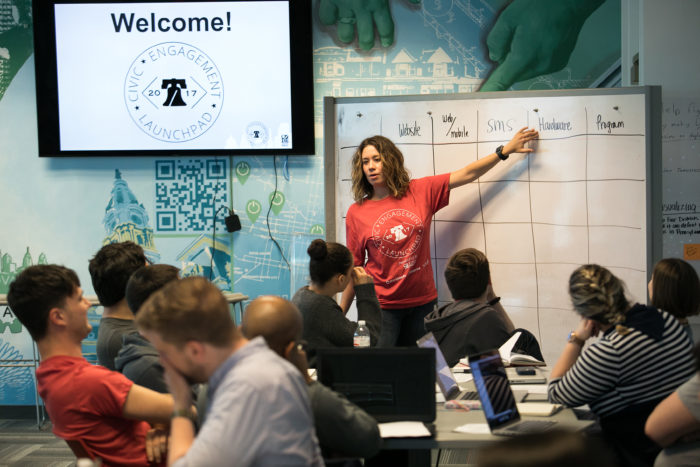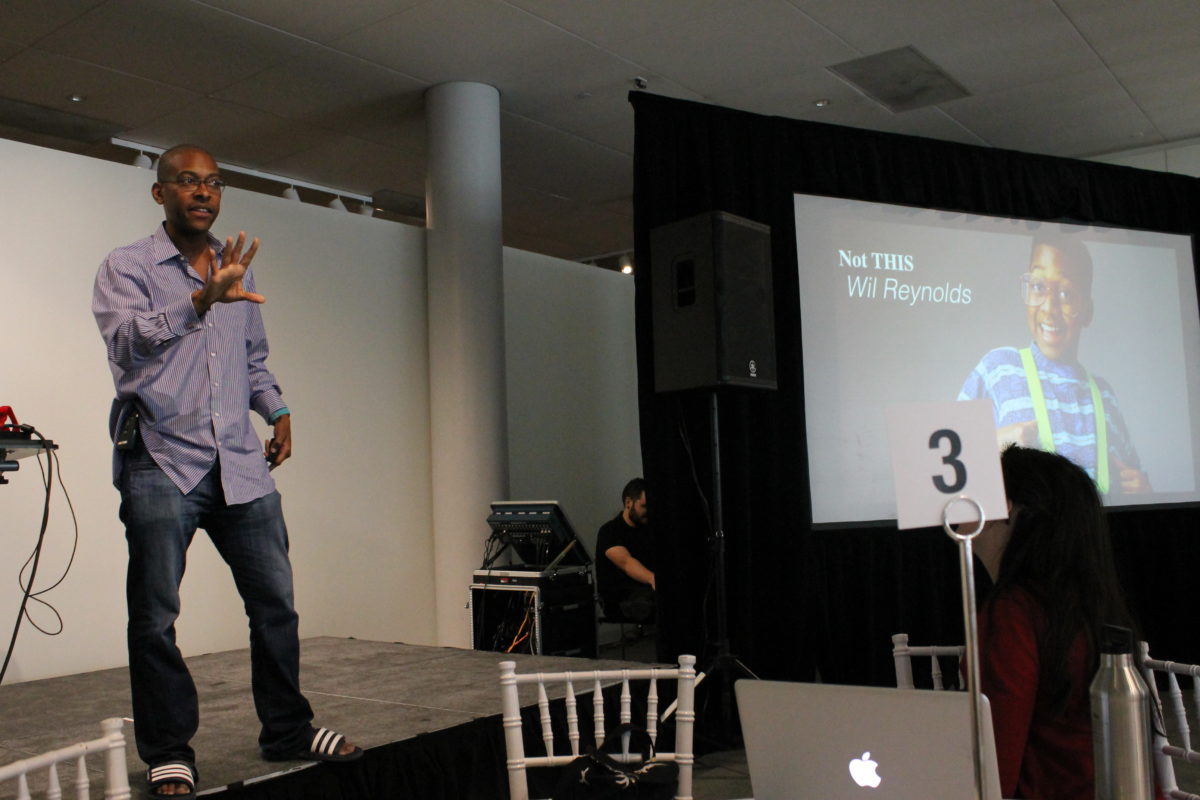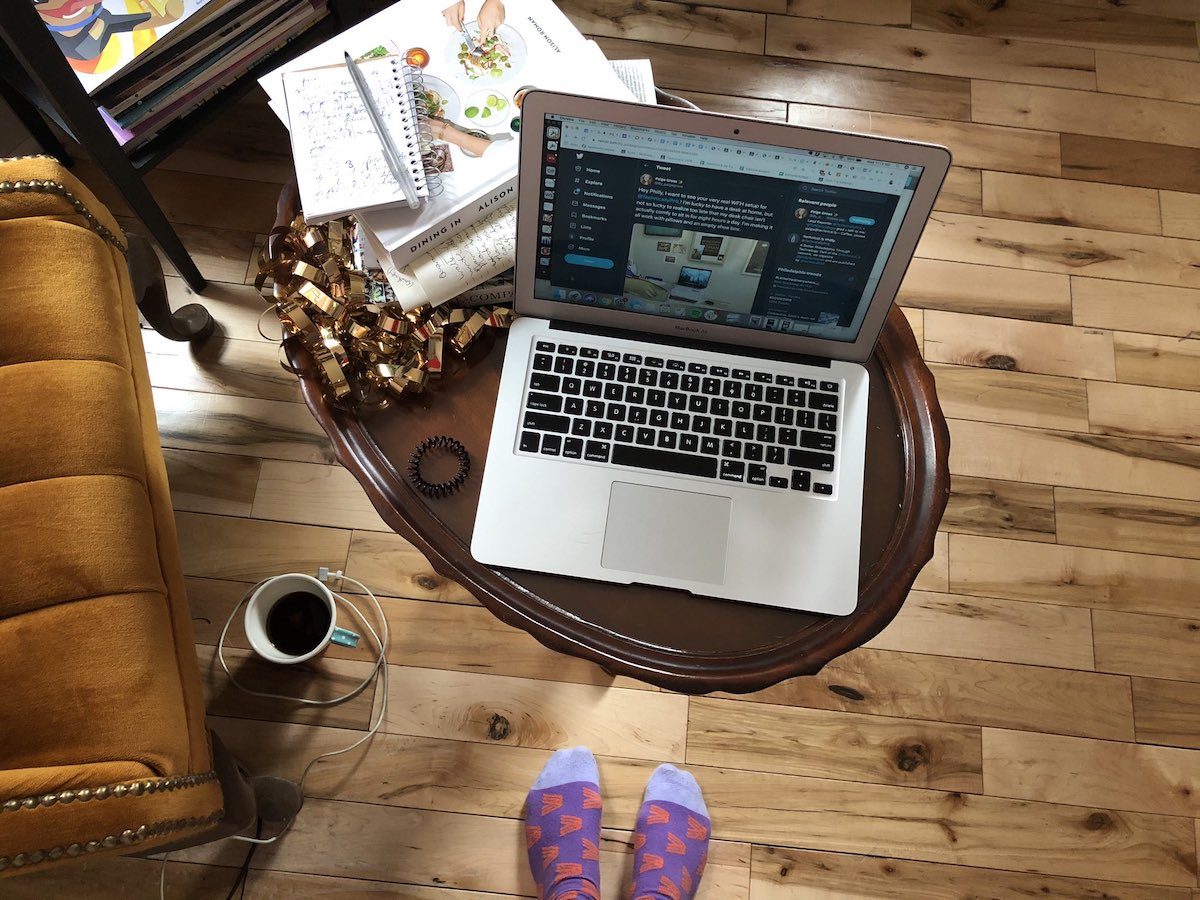In mid-March, most companies in the Philadelphia area decided to send their workers home to work remotely to help ease the spread of COVID-19 and ultimately comply with stay-at-home orders prohibiting folks from leaving their homes for nonessential reasons.
Since then, I’ve heard this sentiment over and over: We’re not just working from home right now. We’re trying to get work done at home amid a global pandemic.
Times are different. No human resources department had planned for a health crisis that would require us to work through stay-at-home orders while a dangerous virus sends thousands of people to the hospital, some of whom will never go home.
What does that look like?
Quite literally, it looks like laptops set up in dining rooms, on coffee tables or on desks wedged into a spare bedroom. Some lucky folks already had a remote work environment, but there’s no training to prepare you to work alongside your whole household, whether that be your significant other, roommates or your kids.
It also looks like 1.5 million Pennsylvanians filing for unemployment in the last month and a half, some wondering if they’ll be extended a job offer when (or if) their place of work reopens.
I spell this out because no matter how hard I try and focus on being a technology and business reporter, I spend some part of every single day fighting an anxiety spiral when I read updated numbers or think too hard about how long social distancing rules will prohibit me from hugging family members or how my younger sister’s college graduation may never happen.
This is our reality right now. I’m anxious, yet glad I have a job that I can continue doing from home that lets me connect with other humans on a daily basis. But still, I, like I’m sure many of you, worry about my own ability to be productive during this time.
I never had a formal conversation about productivity with my team until I started reporting for this story, but the general consensus is: We’re all doing our best. I asked Technically Media CEO Chris Wink if he had thoughts about our productivity during this time.

“It’s silly to think anyone is going to work the same way they did before. I don’t think I see it as more or less productive exactly, though, because everything is just so different,” he told me. “It’s an important time to remind ourselves that companies are made of people, and companies were always meant to serve people, not the other way around.”
Efficiency isn’t necessarily about how many emails we send or our widget output, he said, but about the problems solved.
“Do I think everyone on my team is, like, going to answer emails more efficiently than ever, or be hovering over Slack waiting for me to DM every minute of the work day? No. That’s never realistic, so it certainly isn’t now,” Wink said.
Eliza Pollack, the City of Philadelphia’s director of innovation, told me she’s currently working at home with her young daughter, and that being open with others on her team about their individual responsibilities and work environments has been essential.
“As someone with a little kid and a partner who’s also working full time, I’ve found that transparency for me is really important — telling people when I can and cannot get things done, saying I might need to handle things at nontraditional hours, and making sure they’re OK if my daughter crashes a call, etc.,” she said via Twitter. “We’ve implemented a policy around triage — like whoever can handle this first, do it and just let the rest of us know.”

Some company leaders have said they haven’t seen a dip in productivity from their employees because of the remote culture already in place. Ross Shanken, CEO of Jornaya, wrote in an email that while adjusting to a 100% remote workforce seemed challenging, they had a fair amount of experience as an already distributed team. Productivity during this transition has “exceeded my expectations,” he said.
“I think this is because of all the work we’ve done together on strengthening our culture. We’ve built a culture of genuine caring about our organization and each other,” Shanken said.
For others, external productivity that might have once been focused on sales or deals can now turn internal. David Lindsay, CEO of Oncora Medical, said that rather than lamenting sales being down, his team is turning focus to projects like improving product development, supporting existing clients and hiring for some open positions. The team also made some adjustments to its WFH policy.
“Specifically, we now include all business and dev team members in morning huddles, we made sure our flexible work hours policy was publicized so employees could take the time they need for childcare, new pet care and mental health,” Chris Pasakarnis, the company’s VP of engineering, wrote in an email.
For others, it’s hard to ignore how work-life balance has seeped wholly into home life.
Last week, when I talked to Wil Reynolds about Seer Interactive‘s family fund, I asked him about the kind of productivity he expects right now. He operates differently than his team, he said, which is why his people ops team is handling the company’s changing policies right now.

Reynolds said could go forever without a vacation or from taking a break from work, but it boils down to making sure how he’s operating is working for his family.
“My biggest check-in is with my spouse,” he said. “It’s less about work and it’s more about making sure I’m being the kind of husband and father that I want to be.”
Everyone I talk to these days is juggling work with some added responsibilities — childcare, tending to older family members, making sure that their roommate or significant other stays safe and sane right now — with the added worry and anxiety of no real end date to our current circumstances.
I suspect I sought out to write this story to connect with other people who acknowledge that there’s a heck of a lot going on in the world right now and productivity doesn’t and shouldn’t look the same as it did back in February. Maybe it won’t ever again.
Maybe all we can ask for is to do the best we can with what we have. I think I’ll leave you with the ending sentiment our CEO sent me while Slacking about this story:
“Hire people you trust. Give them a reason to believe the work is worth doing,” Wink told me. “Assume they’re doing the best they can given the legendarily fucked moment we are in together.”







